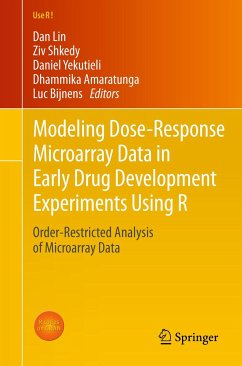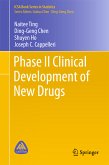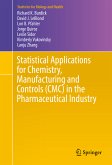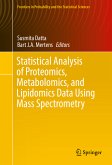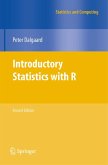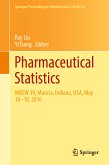Part I of the book is an introduction, in which we discuss the dose-response setting and the problem of estimating normal means under order restrictions. In particular, we discuss the pooled-adjacent-violator (PAV) algorithm and isotonic regression, as well as the likelihood ratio test and non-linear parametric models, which are used in the second part of the book.
Part II is the core of the book. Methodological topics discussed include:
· Multiplicity adjustment
· Test statistics and testing procedures for the analysis of dose-response microarray data
· Resampling-based inference and use of the SAM method at the presence of small-variance genes in the data
· Identification and classification of dose-response curve shapes
· Clustering of order restricted (but not necessarily monotone) dose-response profiles
· Hierarchical Bayesian models and non-linear models for dose-response microarray data
· Multiple contrast tests
All methodological issues in the book are illustrated using four "real-world" examples of dose-response microarray datasets from early drug development experiments.
Dieser Download kann aus rechtlichen Gründen nur mit Rechnungsadresse in A, B, BG, CY, CZ, D, DK, EW, E, FIN, F, GR, HR, H, IRL, I, LT, L, LR, M, NL, PL, P, R, S, SLO, SK ausgeliefert werden.
Hinweis: Dieser Artikel kann nur an eine deutsche Lieferadresse ausgeliefert werden.
"This edited volume is designed for the analysis of dose-response microarray data in a pharmaceutical environment. ... The book includes many useful topics and procedures for graduate students, practitioners, and researchers ... in the arena of bioinformatics and statistical bioinformatics. The contributions are written to be accessible to readers with moderate to strong knowledge of statistics, computer science, and biology, since this is a genuine multidisciplinary area." (S. E. Ahmed, Technometrics, Vol. 55 (3), August, 2013)

